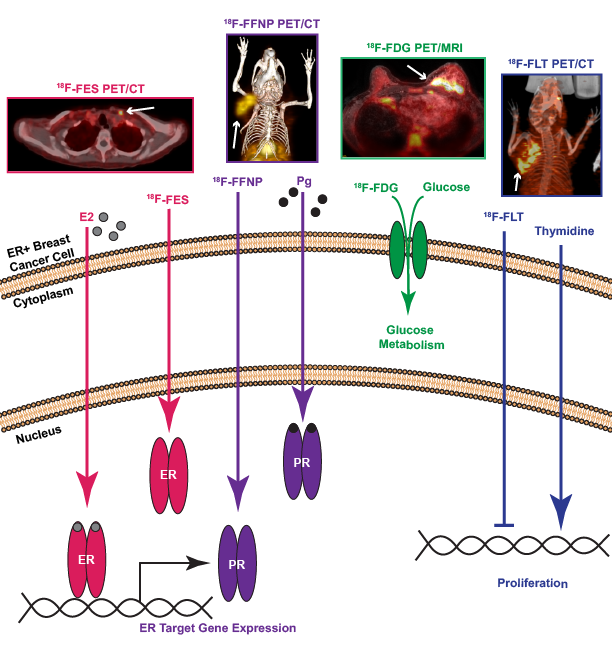Our research is focused on advancing the use of molecular imaging to better understand the biology of breast cancer including its response to targeted drug therapies and early identification of drug resistance. Predictive and pharmacodynamic molecular imaging biomarkers may help physicians choose the best treatment tailored to each patient based on their specific tumor signaling characteristics and ultimately improve survival. Specifically, we are interested in quantitative imaging of steroid hormone receptors (estrogen and progesterone receptor) and their associated signaling pathways since the majority of breast cancer deaths occur in patients with metastatic estrogen receptor alpha (ER) positive disease.
Our experimental approaches span the translational continuum from preclinical (cell-based assays and tumor xenograft models) to clinical studies. We are currently focused on using 18F-labeled radiopharmaceuticals and multimodality imaging with positron emission tomography (PET) and computed tomography (CT) or magnetic resonance imaging (MRI). Additionally, optical imaging (fluorescence and bioluminescence) is an important tool used for our preclinical work.

Graduate Training and Other Affiliations
Contact Information
Department of Radiology
University of Wisconsin School of Medicine and Public Health
600 Highland Avenue
Madison, WI 53792-3252
